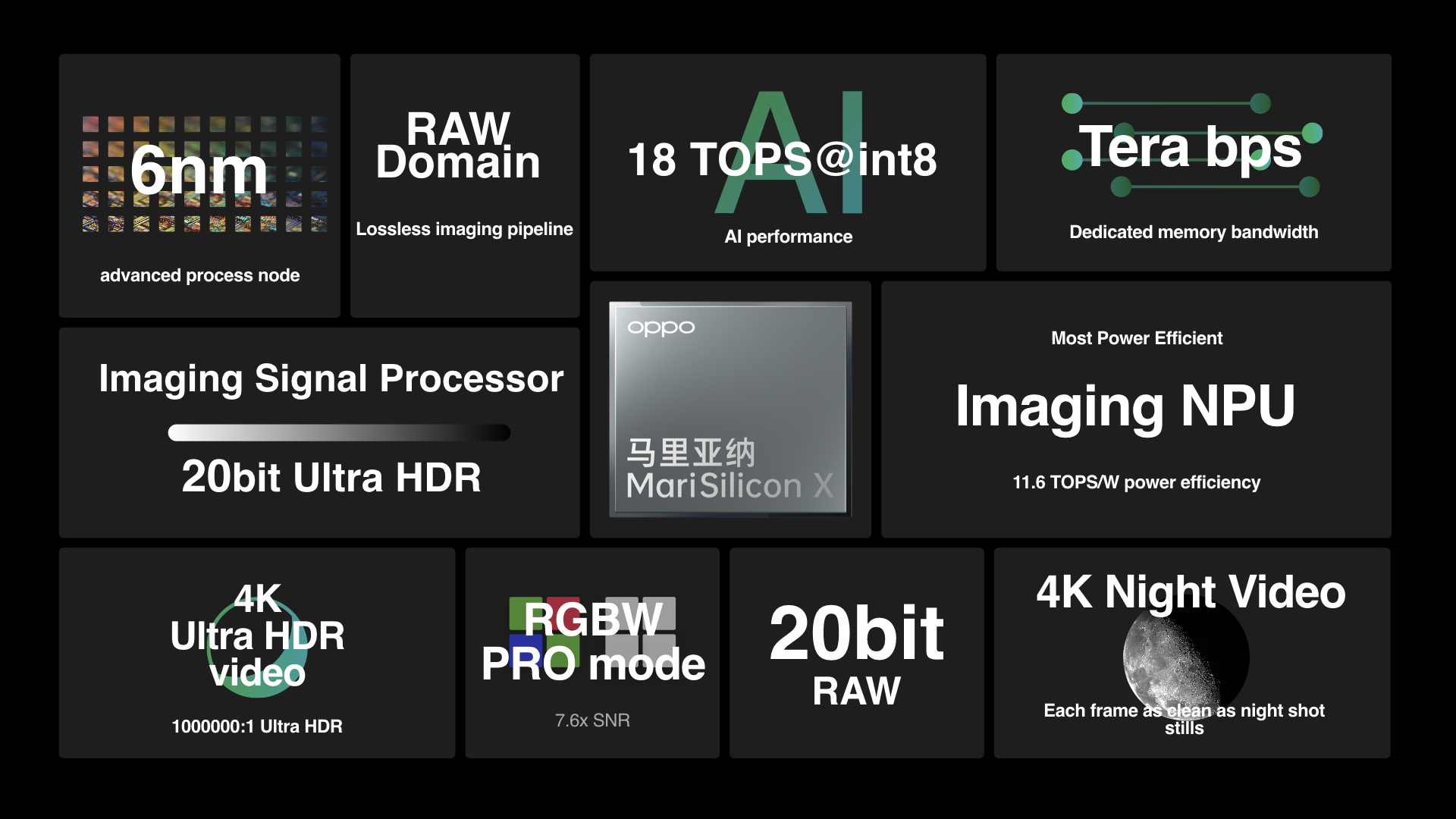 In today’s ever-evolving world, smartphones have become our best companions, making them an essential device in our day-to-day life and the processing units are very small things but big enough. There are different types of processor handling different system instructions such like CPUs and GPUs. Instead of letting the CPU carrying out the AI computing tasks, the NPU is assigned to do the tasks and it does better and faster performance. Bearing these factors in mind, in 2021, OPPO released its first self-designed cutting-edge 6nm imaging Neural Processing Unit (NPU) named MariSilicon X. Currently there are very less companies in the world hold the capabilities of designing a 6nm processing unit. The launch of the MariSilicon X NPU marks a remarkable step for OPPO to foray into in-house design of processing units.
In today’s ever-evolving world, smartphones have become our best companions, making them an essential device in our day-to-day life and the processing units are very small things but big enough. There are different types of processor handling different system instructions such like CPUs and GPUs. Instead of letting the CPU carrying out the AI computing tasks, the NPU is assigned to do the tasks and it does better and faster performance. Bearing these factors in mind, in 2021, OPPO released its first self-designed cutting-edge 6nm imaging Neural Processing Unit (NPU) named MariSilicon X. Currently there are very less companies in the world hold the capabilities of designing a 6nm processing unit. The launch of the MariSilicon X NPU marks a remarkable step for OPPO to foray into in-house design of processing units.
 A more common practice in the smartphone industry is to adopt an existing general platform from semiconductor companies such as Qualcomm. The camera is one such aspect and this is where MariSilicon X seal the gap. To pursue its legacy of cutting-edge AI tech, OPPO as an AI imaging technology pioneer, took a bold decision to self-design its own computing imaging processor.
A more common practice in the smartphone industry is to adopt an existing general platform from semiconductor companies such as Qualcomm. The camera is one such aspect and this is where MariSilicon X seal the gap. To pursue its legacy of cutting-edge AI tech, OPPO as an AI imaging technology pioneer, took a bold decision to self-design its own computing imaging processor.
 OPPO integrated its software and hardware services in 2019 as part of its new strategy, investing serious sums in R&D since 2020 over a 3-year horizon. One of the research directions was to develop a 6nm processor unit that supports real-time RAW processing video. There were no references on the market at that time, thus the team has to independently developing the front-end, back-end design, building up the memory architecture, writing the algorithm, and many more. After 3 years, OPPO has finally ushered in the successful tape-out of MariSilicon X NPU.
OPPO integrated its software and hardware services in 2019 as part of its new strategy, investing serious sums in R&D since 2020 over a 3-year horizon. One of the research directions was to develop a 6nm processor unit that supports real-time RAW processing video. There were no references on the market at that time, thus the team has to independently developing the front-end, back-end design, building up the memory architecture, writing the algorithm, and many more. After 3 years, OPPO has finally ushered in the successful tape-out of MariSilicon X NPU.
 OPPO’s first self-developed MariSilicon X NPU brings more power to mobile imaging systems. Built on 6nm process technology, MariSilicon X is a groundbreaking pairing of advanced NPU, ISP, and Multi-tier Memory Architecture. It delivers superlative image processing with ultra-high power efficiency. A historic first in Android technology, MariSilicon X boasts real-time RAW processing of 20bit Ultra HDR and 4K AI Night Video, amongst other cutting-edge capabilities. Debuting on the flagship Find X series, MariSilicon X promises the most advanced and powerful Imaging experience ever.
OPPO’s first self-developed MariSilicon X NPU brings more power to mobile imaging systems. Built on 6nm process technology, MariSilicon X is a groundbreaking pairing of advanced NPU, ISP, and Multi-tier Memory Architecture. It delivers superlative image processing with ultra-high power efficiency. A historic first in Android technology, MariSilicon X boasts real-time RAW processing of 20bit Ultra HDR and 4K AI Night Video, amongst other cutting-edge capabilities. Debuting on the flagship Find X series, MariSilicon X promises the most advanced and powerful Imaging experience ever.
The MariSilicon X NPU includes a strong ISP that allows photos to be shot with a 20bit 120dB Ultra-high Dynamic Range, which is 4x that of the Find X3 Pro. It offers photos a 1,000,000:1 contrast ratio between the brightest and darkest regions of the image, making them more real. Additionally, MariSilicon X NPU can perform 18 trillion operations per second, which is more than enough computational capacity for the AI algorithms. Besides, with a staggering 11.6 TOPS per watt power efficiency, the NPU delivers top-level performance without depleting the battery. MariSilicon X NPU also includes a groundbreaking tera-bps memory subsystem, which allows it to fully utilize the NPU’s computing capability without being controlled by memory. As a result, this dramatically lowers the time it takes to copy data back and forth between storage and processing units.
OPPO has always been on the forefront of cutting-edge imaging technology. It was the first to introduce 10x hybrid zoom camera, first rotating camera, first AI beautification technology, etc. A more recent innovation introduced on OPPO F21 Pro is the RGBW sensor co-developed with Sony which allows smartphone camera to capture more lights. Driven by the brand proposition “Inspiration Ahead”, OPPO continues to exercise its innovative zeal to come up with never-before-seen technologies that enable its customers to break barriers in pursuit of excellence.
Hence, MariSilicon X NPU opens up a new chapter among the industry’s leading technologies. With its strong computational power and its AI learning capability, MariSilicon X will grow automatically overtime and enchant the world with better imaging experience.
